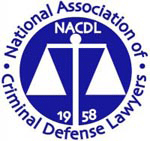The Nevada traffic laws are found here. “Driving Under The Influence” is defined as follows:
Driving Under the Influence of Intoxicating Liquor or Controlled or Prohibited Substance (NRS 484.379)
1. It is unlawful for any person who:
(a) Is under the influence of intoxicating liquor;
(b) Has a concentration of alcohol of 0.08 or more in his blood or breath; or
(c) Is found by measurement within 2 hours after driving or being in actual physical control of a vehicle to have a concentration of alcohol of 0.08 or more in his blood or breath,
to drive or be in actual physical control of a vehicle on a highway or on premises to which the public has access.
2. It is unlawful for any person who:
(a) Is under the influence of a controlled substance;
(b) Is under the combined influence of intoxicating liquor and a controlled substance; or
(c) Inhales, ingests, applies or otherwise uses any chemical, poison or organic solvent, or any compound or combination of any of these, to a degree which renders him incapable of safely driving or exercising actual physical control of a vehicle,
to drive or be in actual physical control of a vehicle on a highway or on premises to which the public has access. The fact that any person charged with a violation of this subsection is or has been entitled to use that drug under the laws of this State is not a defense against any charge of violating this subsection.
3. It is unlawful for any person to drive or be in actual physical control of a vehicle on a highway or on premises to which the public has access with an amount of a prohibited substance in his blood or urine that is equal to or greater than:
Urine Blood
Nanograms Nanograms
Prohibited substance per milliliter per milliliter
(a) Amphetamine 500 100
(b) Cocaine 150 50
(c) Cocaine metabolite 150 50
(d) Heroin 2,000 50
(e) Heroin metabolite:
(1) Morphine 2,000 50
(2) 6-monoacetyl morphine 10 10
(f) Lysergic acid diethylamide 25 10
(g) Marijuana 10 2
(h) Marijuana metabolite 15 5
(i) Methamphetamine 500 100
(j) Phencyclidine 25 10
4. If consumption is proven by a preponderance of the evidence, it is an affirmative defense under paragraph (c) of subsection 1 that the defendant consumed a sufficient quantity of alcohol after driving or being in actual physical control of the vehicle, and before his blood or breath was tested, to cause him to have a concentration of alcohol of 0.08 or more in his blood or breath. A defendant who intends to offer this defense at a trial or preliminary hearing must, not less than 14 days before the trial or hearing or at such other time as the court may direct, file and serve on the prosecuting attorney a written notice of that intent.


